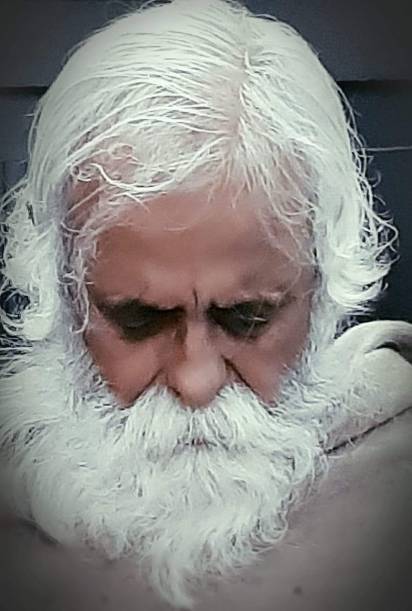In the present age, the metaphysical concept of meditation (Dhyān) has become a subject of widespread global discourse. Every religion and institution defines it according to its own understanding, learning, and conception.
I am sharing the teachings of Sri Krishn from the Bhagavad Gita (approximately 5,200 years ago) and those of Maharshi Patanjali from his Yoga Sutras (about a thousand years ago), as both of these Indian scriptures are well known across the globe and shed profound light on this metaphysical concept.
Lord Krishna sings in Chapter Five of Bhagavad Gita:
स्पर्शान्कृत्वा बहिर्बाह्यांश्चक्षुश्चैवान्तरे भ्रुवोः ।
“That sage is liberated forever who shuts out of his mind all objects of sensual pleasure, keeps his eyes centered between the two brows, regulates his Pran and Apan, conquers his senses, mind and intellect, and whose mind is fixed on salvation.”
Revered Gurudev has explained the meaning of this verse to me as follows:
It is of vital importance to exclude from the mind all thoughts of external objects, and to keep the eyes steadily fixed at the point between the two brows. Fixing the gaze between the brows does not merely mean staring at a particular spot; rather, while the practitioner sits erect, the eyes should be directed straight ahead from the midpoint between the eyebrows, without wandering restlessly to the right or left.
While keeping the eyes aligned with the ridge of the nose, care must be taken not to actually stare at the nose. By balancing Pran against Apan and keeping the eyes steadily fixed, one should direct the mind’s vision (Surat) to the breath, observing its natural course: when the breath enters, how long it is held — without attempting to forcefully prolong even a half-second pause — and how long it remains outside.
It hardly needs to be said that the rhythm of the breath will resonate audibly. As the mind’s vision gradually learns to focus steadily on the inhalation and exhalation, the breathing becomes constant, firm, and balanced. At this stage, neither the arising of inner desires nor the intrusion of external desires will disturb the mind and heart. Thoughts of external pleasures have already been shut out; now even inner desires will cease to arise.
Contemplation then stands steady and unbroken, like a stream of oil. A stream of oil does not descend drop by drop like water; it flows in a constant, continuous line. In the same way, the breath of a sage of attainment moves smoothly and evenly. Thus, the one who has balanced Pran and Apan conquered the senses, mind, and intellect, freed himself from desire, fear, and anger, perfected contemplative discipline, and taken refuge in salvation, is ever liberated
And now, the Patanjali Yog Sutra, in the Vibhuti Pada, defines this metaphysical term and states:
तत्र प्रत्ययैकतानता ध्यानम् ॥
Meditation (Dhyān) is the uninterrupted, one-pointed flow of the Vritti (mental disposition). The Vritti moves continuously around the object on which the mind is focused — this is what constitutes Dhyān.
Revered Gurudev says:
Dhyān implies an uninterrupted, oil-like flow of contemplation, accompanied by steady and stable breathing, with no interference from any other thoughts except the chanting of OM…OM…OM.
In Dhyān, the Vritti, or mental disposition, moves in unison, in a single direction. If any other thoughts intrude, the intensity of Dhyān is broken.
In meditation, both the meditator and the object of meditation exist, yet the process is effortless, without any awareness of effort. Gradually, the Dhyān becomes subtler, until only the object of meditation remains in focus. At this stage, the state of Samādhi (transcendence) manifests.
I cordially invite everyone who reads this post to shed light on this metaphysical term in detail, and to share whether the concepts in their understanding align with those described above or differ. If they differ, please explain the alternative perspective along with its lineage and provide detailed explanations.

Humble Wishes.
